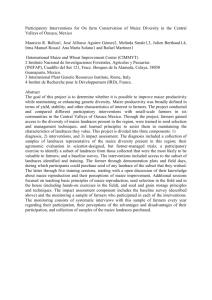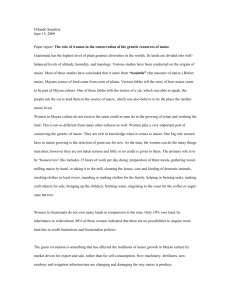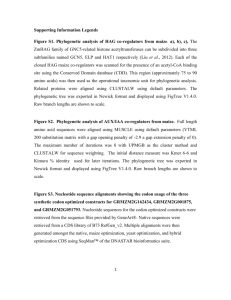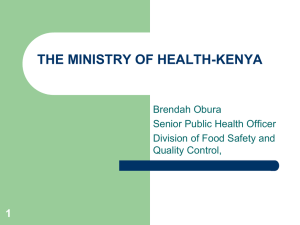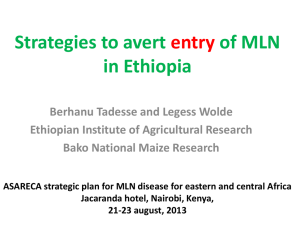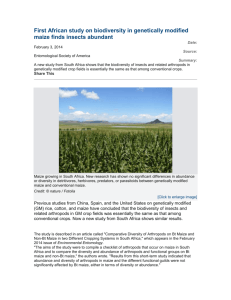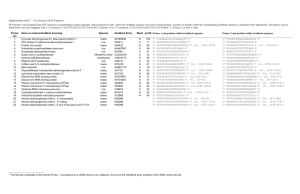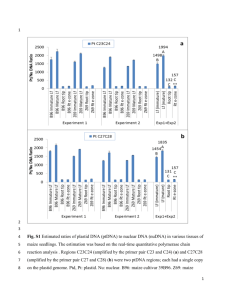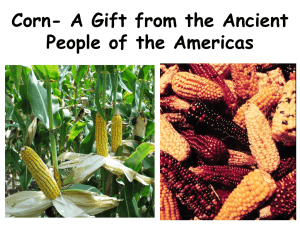Resilience - Food Security Network
advertisement
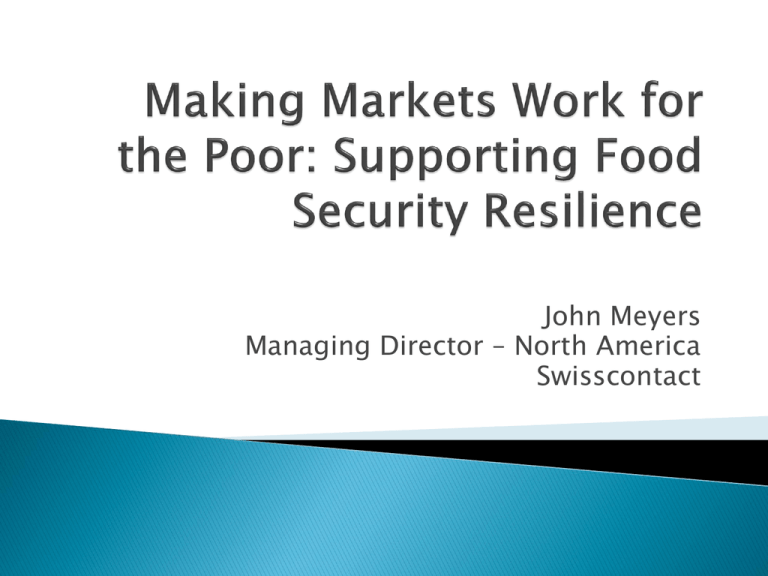
John Meyers Managing Director – North America Swisscontact Programs should not only strengthen the household’s or community’s productive capacity, but also strengthen capacity to adapt to changing conditions and withstand market shifts and external events…entrepreneurship. Luca Alinovi and his team at FAO…describe the household as a “complex adaptive system” See: Alinovi et. al. Livelihoods Strategies and Household Resilience to Food Insecurity: An Empirical Analysis to Kenya. 2010. http://erd.eui.eu/media/BackgroundPapers/AlinoviRomano-D%27Errico-Mane.pdf 1. 2. 3. Geographical/Ecological Social/structural Individual capacity How can the natural environment support a wide-range of economic activities and contribute to diverse potential for income opportunities How can the inputs (seeds, fertilizers, disease control, bees) be introduced into the geography to support food security How can these inputs be adapted or improved for greater outcomes ◦ Stakeholders - government, business, producers, finance sector: understand roles and responsibilities ◦ Trust: Building trusts in the market networks (producer/buyer; borrower/lender) ◦ Knowledge: Supporting systems of knowledge development and transfer Interest in and understand benefits of developing new skills necessary to increase income in a sustainable way. Entrepreneurial skills Making Markets Work for the Poor (M4P) Based on premise that impoverished communities are dependent on market systems for their livelihoods Goal: Change market systems to work more effectively for the poor Systemic action – where market systems are failing to serve the needs of the poor….required understanding of the players and functions within the system Sustainable change achieved by aligning market functions and players with incentives and capacity to respond to change Large scale impact through greater access Facilitate market development…not displace key actors Source: www.m4phub.org Katalyst (www.katalyst.com.bd) Goal: Increase income by increasing competitiveness of 16 key sectors: vegetable, prawn, potato, maize, jute, furniture, fish, tourism, seed, fertilizer and ICT. Targets: Over two million people and small businesses by the end of its second phase in 2013. Methodology. Using M4P strategy, Katalyst focuses on sectors which are relevant to large numbers of poor people and which have the greatest potential for inclusive growth and sustainable change. Funders: Swiss Agency for Development and Cooperation, the UK Department for International Development, the Canadian International Development Agency and the Embassy of the Netherlands. Implemented under the Ministry of Commerce of the Government of the People’s Republic of Bangladesh by Swisscontact and GIZ. Situational analysis Domestic demand for maize steadily growing steadily mainly from the poultry sector, where it is consumed as a feed ingredient. Due to lack of local capacity, Bangladesh imported (mainly from India and Myanmar) over 30% of the total required – and as the poultry sector continued to grow (by 15% annually), so did the demand for maize. Introduce maize in particular in areas, where other crops (e.g. rice) are difficult to produce (on river islands flooded in summer), or in seasons where farmers leave their land fallow (summer maize). Constraints impeding the sector’s growth: Low productivity due to lack of access to cultivation know-how and inputs (including finance) Low quality of maize due to inadequate post-harvest facilities Market access and high dependency on the poultry industry making it vulnerable to market shocks. Demand stimulation: Promoting maize-based cropping patterns Improving access to quality inputs Expanding contract farming system Access to financial services Introducing technological innovation Promotion was made primarily by input companies (through their retailer networks) and feed-mills + traders, demonstrating the impact of market player in stimulating production. Katalyst tried, with limited success, to promote partnerships between input companies and the Department of Agriculture Extension to promote maize-based cropping patterns in locations with potential. Increased access and use of quality seed (in the chars and the hill tracts) through seed companies. Information on best cultivation practices and production techniques also disseminated through ICT-channels, local business associations, media and fertilizer and pesticide companies. Provides built-in market-driven production. This model enables farmers to link with traders who can provide them with know-how regarding maize production, access to larger buyers (the feed mills), and credit to buy inputs. To help scale up the model, Katalyst signed MoUs with two banks (National Bank Ltd. and Agrani Bank Ltd.) to support the introduction of dedicated credit lines to maize contract farmers. Encourage and support market actors to provide producers with information on best agricultural practices


